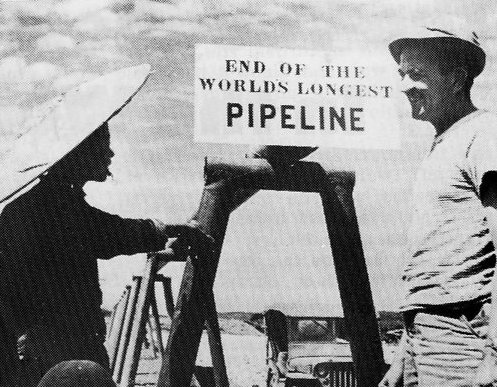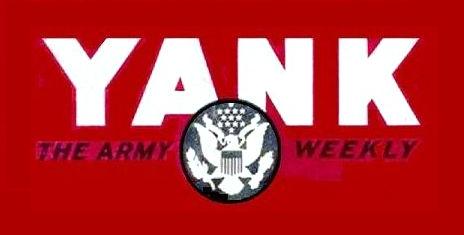
 CHINA-BURMA-INDIA PIPELINE
CHINA-BURMA-INDIA PIPELINE
|
Born in the minds of Allied leaders at Quebec in August of 1943, the fuel pipeline from India to China was made a reality by American soldiers.
Longest of its type in the world and running through the globe's most rugged terrain, the line is a potential monument o the strength and sweat of the GIs who opened the jungle and put down the pipe. Through the pipeline, fuel flowed rapidly toward fighting fronts in Burma and China during the closing months of the war.
In the summer of 1945, a short time before VJ Day, the pipeline was reaching its peak capacity. At that time Sgt. John Blay, YANK Staff Correspondent, visited pipeline installations to make these photographs of Army engineers at work.
|
THE LONGEST PIPELINE IN THE WORLD
|
CLICK PHOTOS TO CONTINUE
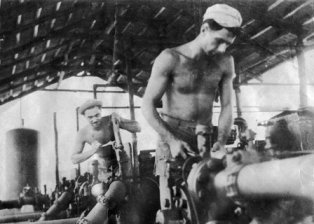
Fuel for China is off-loaded from tankers at either Budge-Budge, near Calcutta, or Chttagong; both in India's
Bengal Province. At Budge-Budge, pump operator Pfc. Michael Beyer of Ashland, Wis., and Pfc. Edward Rich of New
York City, the gauge man in the background, work on powerful pumps which will start 100 octane gasoline on its
long journey.
|
|
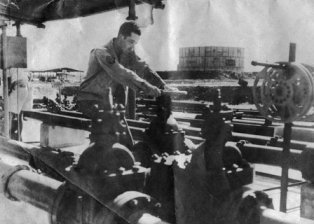
Much of the fuel for China is stored along the way in huge tank farms, areas studded with steel reservoirs
built to handle petroleum products. Here, a T/4 opens a valve at one of the three pumping stations located in
Tinsukia Tank Farm, one of the largest installations of its type along the pipeline.
|
|
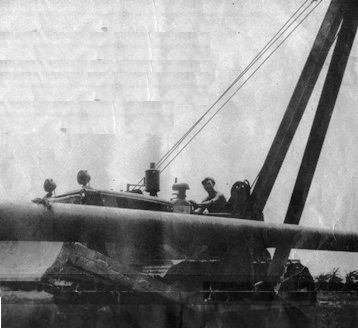
Floods, landslides and the humid climate damage sections of the pipeline every week and construction crews
must be on the alert at all times. When coolies aren't available, a side-boom attachment to a bulldozer
enables M/Sgt. Norman C. Maino of Williamstown, Mass., to handle long sections of heavy pipe with ease.
|
|

GI advertising in Assam.
"GAS AINT RATIONED - TIRES ARE FREE - MAKE THEM LAST - IF YOU WANT TO SEE - THAT GAL BACK HOME"
Supplied by pipeline, POLs along the Stilwell Road fill the tanks of jeeps and
trucks and price is never mentioned although drivers are cautioned against waste.
|
|
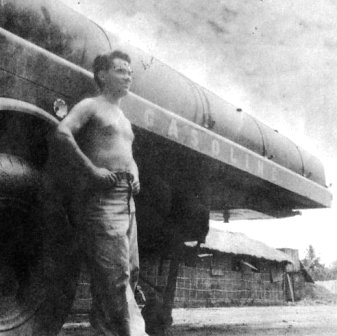
Chief Dispatcher on the B & A pipeline is T/Sgt. Harold E. Welch of New York City, whose communications
enable him to keep in touch with his pumping stations.
|
|
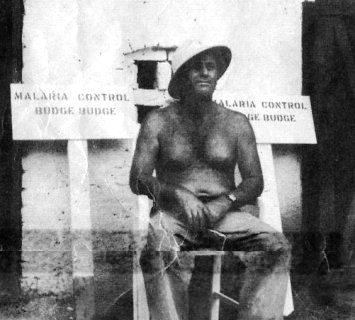
T/5 James DiBenedetto of New Rochelle, N.Y., carries out his portion of the planned program of malaria control
which has safeguarded the health of pipeline men.
|
|
To build the pipeline, engineers crossed lowland rice paddies in flood, worked over the backs of rolling hills and hacked through green jungle covering the steep sides of mountains.
This line curls across the beds of wide rivers and hangs high in the air over deep mountain gorges.
Touching three countries, it runs from sea level to heights of 9,000 feet.
|
CLICK TEXT TO CONTINUE
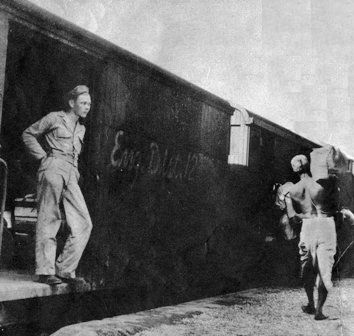
Courier Pfc. Norman M. Veland of Ellendale, N.D., rides his own freight car along the B & A Ry., dropping off
supplies to isolated pipeline detachments. Many units cannot be reached by rail but must depend on trucks.
|
|
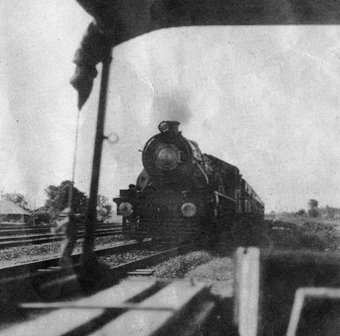
This is "13 Up" which leaves Calcutta in the morning's early hours each day for its run north. The train
hauls a baggage car upon which pipeline personnel depend for food, mail and PX supplies.
|
|

Assam and Burma are dotted with pumping stations which maintain pressure to drive fuel through the pipeline.
Men at these desolate outposts deep in the mountains have little contact with the outside world for months at a time.
|
|

Running roughly parallel to the twisting Stilwell Road, the pipeline makes its way across the hills and valleys of Assam and Burma. Here, at Pangsau Pass, the line has been pushed over heights more than 4,000 feet above sea level.
|
|
The war's end saw the release of information on the pipeline construction plan.
In India, six-inch lines run from Calcutta and Chittagong to Tinsukia, Assam.
From Tinsukia, one six-inch line reaches to Myitkyina, Burma, while two four-inch lines run to Bhamo, Burma.
From Bhamo, a four-inch line extends to air bases beyond Kunming, China.
|
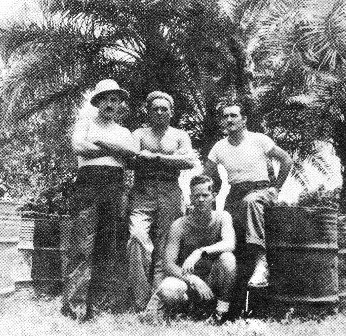
These GIs of the 789th E.P.D., plus a maintenance man and cook, are the entire pipeline personnel at isolated
Pumping Station #4 in Bengal, a few miles below the Ganges River.
|
|
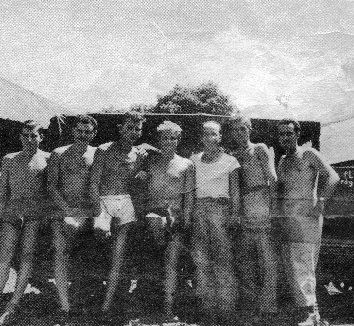
Signal Corps men handle pipeline communications. These soldiers stand before their weasel, used to reach
crippled wires down in flooded rice paddies.
|
|
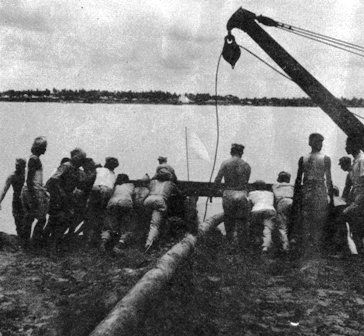
GIs and Indian laborers launch a pontoon in India's Hooghly River. Two
pontoons lashed together will float
pipe to the opposite bank. The main portion of the pipeline will then lie along the river's bottom.
|
|
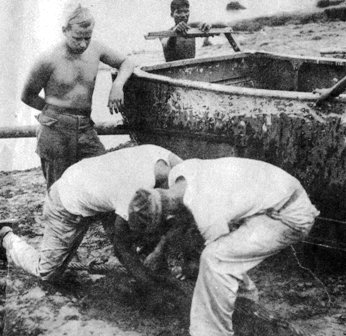
GI engineers splice cable in preparation for a pipeline river crossing. The cable hauls
pontoons across the watercourse and the pipe is floated by the metal boats. Lying on bottom, the line is subjected to heavy stress from river.
|
|
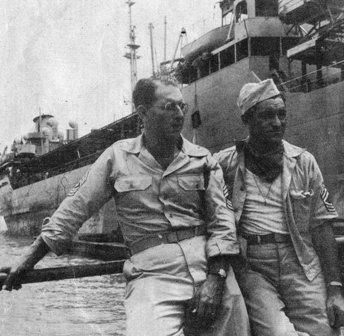
In the shadow of a Navy tanker stand 1/Sgt. Harry S. Berman of Tuscaloosa, Ala., and M/Sgt. Gerino Terenzi
of Lynn, Mass., a section foreman. Terenzi is on the move constantly, checking his pumping stations and
storage tanks.
|
|

In Burma the line follows rugged country, often paralleling mountain streams like the Naunyang River, more than 3,000 feet above sea level. To cross rivers, pipe is usually suspended on bridges or its own independent suspensions.
|
|
As construction of various sections of the pipeline was completed, the hard lonesome work of maintaining operations began.
Men of the Engineer Petroleum Distribution Companies staffed many a tiny pumping station in the depths of the jungle.
From these stations, the constant pressure of huge pumps kept the fuel flowing and crews checked every inch of the line on foot to spot leakages from broken pipes.
With these GIs lived Signal Corps personnel who kept communications in repair so the far-flung stations could be joined by telephone, teletype and radio.
|
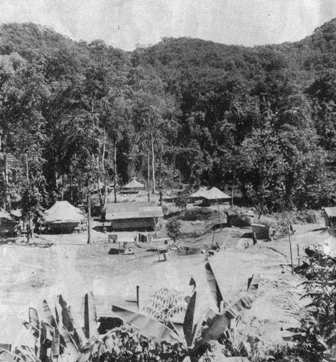
The pipeline camp at Hellgate, along the Stilwell Road, nestles in a valley between peaks of the Patkai Hills.
When monsoons wash out highways, such camps may be completely isolated for days from all surface communication.
|
|
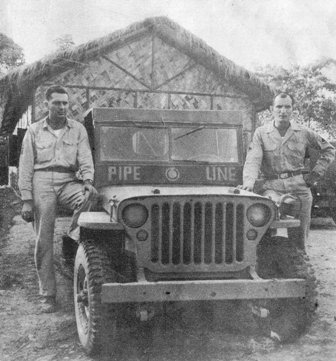
1/Sgt. Arnold J. Hansen of Omaha, Neb., and S/Sgt. Joseph P. Medved of Kansas City, Kan., work out of Ledo.
Pipeline jeeps are among the few vehicles always waved through by MPs stationed along the Stilwell Road.
|
|
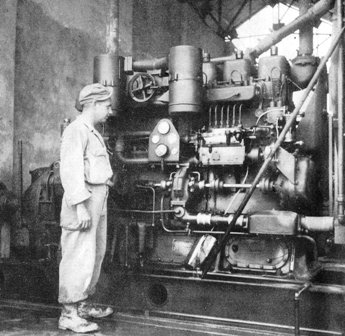
Prime movers of fuel through the pipeline are great pumps driven by sturdy engines. The fuel starts under high pressure. Pipe friction lowers pressure but pumping stations along the line increase it to keep gasoline moving.
|
|
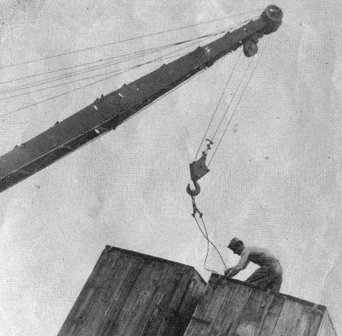
Duties of pipeline workers vary. Here, a GI unloads pumps.
|
|
From December 1944 to VJ Day, Allied troops in Assam, North and Central Burma, and China received more than
150,000,000 gallons of fuel through the pipeline.
In addition, other deliveries were made to points between Tinsukia and the southern pipeline stations at Calcutta and Chittagong.
|
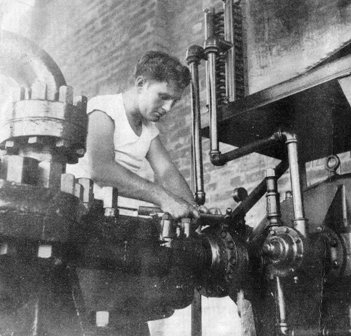
The pumps and engines receive constant care and are checked often to be sure steady pressure is delivered.
The amount of pressure produced at the pumps determines the quantity of fuel which pours through the line.
|
|
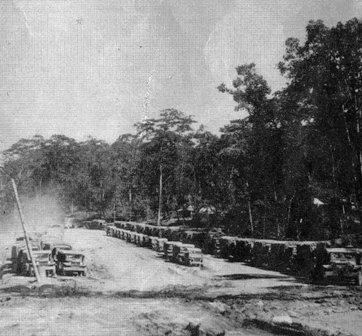
Because of the pipeline, this convoy at a rest area along the Stilwell Road was able to stop carrying aircraft
fuel and divert its cargo space to other needed materials.
|
|
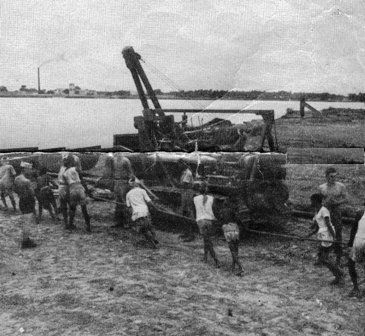
Heavy bulldozers aid Indian laborers to haul pipe.
|
|

Engineer operates valve along the world's longest pipeline. (Cover Photo)
|
|
Dedicated to the men of the Engineer Petroleum Distribution Companies
U.S. Army - China-Burma-India Theater - World War II
|
Special thanks to Thomas R. Foltz, CBI Veteran of the 789th EPD, for providing the
December 8, 1945 China-Burma-India Edition of YANK on which this page is based.

789th EPD UNIT HISTORY
TOM FOLTZ' STORY
WITH THE 789th PIPELINERS
FUEL FOR FREEDOM
MORE YANK
TOP OF PAGE
MORE CBI
Copyright © 2006 Carl Warren Weidenburner
|

 CHINA-BURMA-INDIA PIPELINE
CHINA-BURMA-INDIA PIPELINE

























